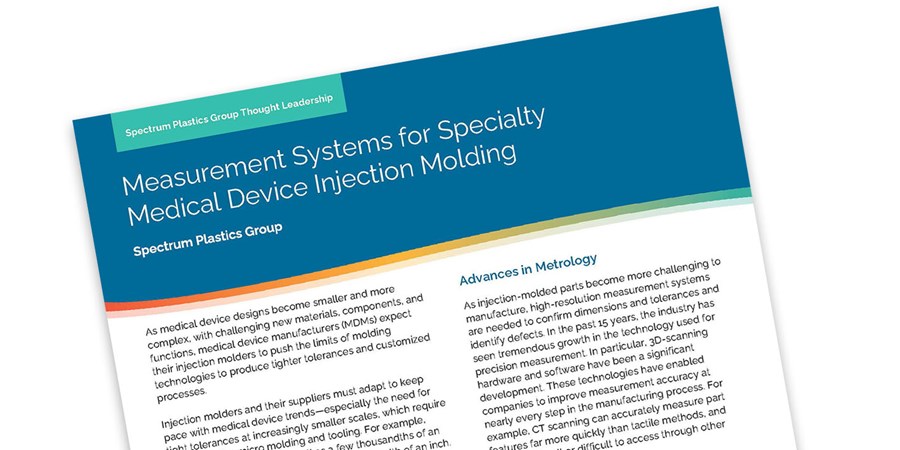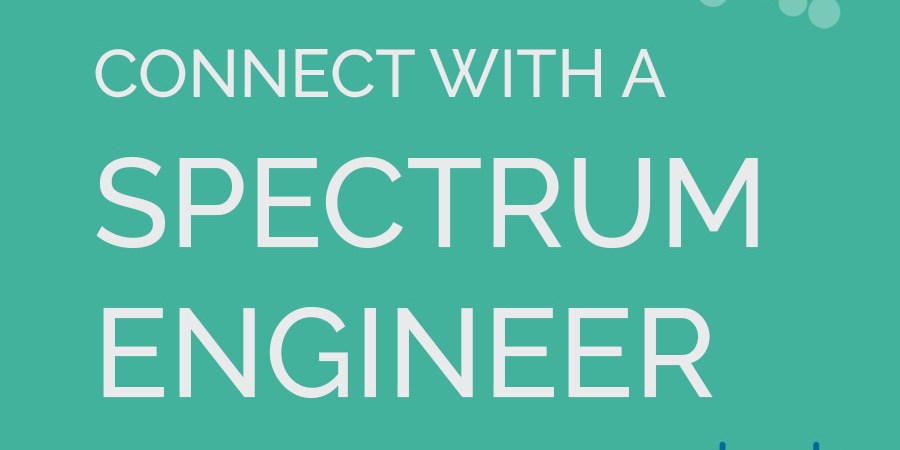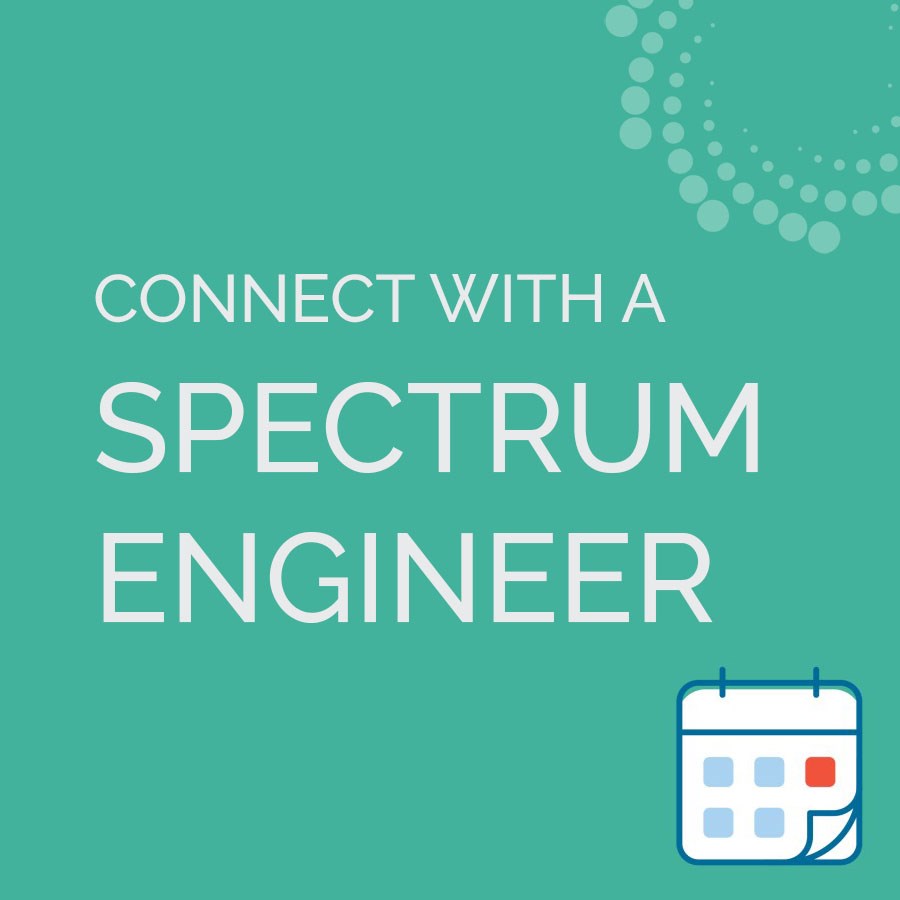Measurement Systems for Specialty Medical Device Injection Molding

Measurement Systems for Specialty Medical Device Injection Molding

Click here to download the thought leadership.
As medical device designs become smaller and more complex, with challenging new materials, components, and functions, medical device manufacturers (MDMs) expect their injection molders to push the limits of molding technologies to produce tighter tolerances and customized processes.
Injection molders and their suppliers must adapt to keep pace with medical device trends—especially the need for tight tolerances at increasingly smaller scales, which require high-precision micro molding and tooling. For example, micro features can be as small as a few thousandths of an inch with positional tolerances of one thousandth of an inch. Wall thickness interactions, cosmetic considerations, and joining techniques for mating parts, such as snap fits, sonic welding, or solvent bonding, are also important elements that need to be defined during the development process, as well as inspection data, lot traceability, packaging, and labeling requirements.
Not only must molders keep up with innovation in more advanced equipment, they must also be able to inspect and measure these extremely small features accurately. It does not matter if a part or assembly can be molded—it must also be able to be validated.
Spectrum Plastics Group strives to measure to a level of precision four times more precise than the drawing specification (4:1 MUR). A 4:1 minimum measurement uncertainty ratio (MMUR) ensures that inspection reports are trustworthy and meet industry standards.
However, if 4:1 MMUR is not possible, Spectrum utilizes alternate methods such as guardband tolerancing to maintain measurement precision and assure the manufactured product is within print tolerances. Guardbanding compensates for reduced accuracy by reducing the available tolerance, sacrificing available tolerance to compensate for a lower MUR. This ensures we do not exceed the tolerance.
We’re happy to help with your projects in any way we can. Contact us and we’ll email you back the information you’re looking for, or we’ll schedule a call to discuss with you in more detail.


As injection-molded parts become more challenging to manufacture, high-resolution measurement systems are needed to confirm dimensions and tolerances and identify defects. In the past 15 years, the industry has seen tremendous growth in the technology used for precision measurement. In particular, 3D-scanning hardware and software have been a significant development. These technologies have enabled companies to improve measurement accuracy at nearly every step in the manufacturing process. For example, CT scanning can accurately measure part features far more quickly than tactile methods, and those too small or difficult to access through other means.
Voids and sink marks and other common molding defects can now be more completely characterized and visually portrayed in a graphical manner that leads to a better understanding of the process and thereby improves root cause analysis to eliminate these flaws.
Unfortunately, there are still some scenarios in which it is not practical to use 3D scanning--for example, if the final product uses transparent or highly reflective surfaces, or is extremely small. When 3D-scanning techniques are not appropriate, tactile probing devices such as coordinate measuring machines (CMMs) or portable measurement arms are used. Tactile probing involves measuring parts by physically interacting with them and can encompass both portable and fixed equipment. These devices continue to improve in speed and accuracy. Currently, tactile methods exceed 3D scanning accuracies in most applications, but cannot fully characterize three-dimensional geometry the way 3D scanning does. However, improvements in 3D scanning accuracies are quickly closing this gap.
Spectrum uses two very powerful software programs that automate the conversion of engineering drawings into inspection reports and digital information. The first is InspectionXpert, which scans drawing using optical character recognition to convert drawing notes, nominal dimensions, and tolerances into an electronic format. Being automated, this process eliminates typographical errors and quickly generates first-article reports and in-process inspection reports.
InspectionXpert seamlessly interfaces with the second electronic data collection program called QC-Calc (ProLink Software). QC-Calc imports the InspectionXpert file and converts it to a ready-to-use statistical process control (SPC) inspection plan. Without this interface, any engineer who wants to digitize data collection for electronic SPC must manually convert the drawing notes, nominal dimensions, and tolerances into an electronic format. This is a time-consuming process that can significantly delay product development, especially if the product has a large number of parts, each with multiple functions.
Spectrum is dedicated to using these advanced digital technologies, which will be fully deployed across all 20 plants by the middle of 2023—greatly improving process efficiencies and reducing operational costs.
Medical device companies continue to design smaller and more innovative products with complex geometries and features. This makes injection molding much more complicated (for example, thin-walled components) and injection molding technologies must adapt to make these challenging products. Complex measurement systems, fixturing, and programming are also required to capture subtle changes in dimensions and keep production running smoothly.
These challenges are often discussed and evaluated during the design for manufacturing (DFM) stage of product development, which will determine how to create the best possible part at the lowest possible cost. MDMs trust Spectrum for its depth of knowledge, expertise, and expert opinions. MDMs may assume they need the tightest possible tolerances, when in fact a looser tolerance will work just as well, and at lower cost.
By discussing validation requirements up front during DFM, both customers and suppliers will understand that critical elements needed to bring a new product to market. Spectrum will also conduct DFM to support those organizations without the internal technical staff, or even for companies that have the expertise, but may not have the resources at hand.
Start a conversation with us to see what Spectrum can do for your next specialty molding project.